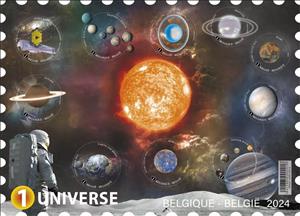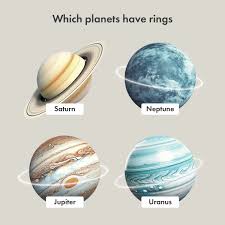Mini Sheet: The Universe (Belgium 2024)
The Universe (Belgium 2024)
26 August (Belgium ) within release The Universe (2024) goes into circulation Mini Sheet The Universe face value 10*1 No Face Value
| Mini Sheet The Universe in catalogues | |
|---|---|
| Colnect codes: | Col: BE 2024.08.26-03 |
Mini Sheet is horizontal format.
Face value €1.43 per stamp on day of issueAlso in the issue The Universe (2024):
- Stamp - Easrth and Moon face value 1;
- Stamp - James Webb Space Telescope face value 1;
- Stamp - Jupiter and 4 Moons of Jupiter face value 1;
- Stamp - Mars face value 1;
- Stamp - Mercury face value 1;
- Stamp - Neptune face value 1;
- Stamp - Saturn face value 1;
- Mini Sheet - The Universe face value 10*1;
- Stamp - Trappist-1 System face value 1;
- Stamp - Uranus face value 1;
- Stamp - Venus face value 1;
Mini Sheet The Universe it reflects the thematic directions:
Astronomy is a natural science that studies celestial objects and the phenomena that occur in the cosmos. It uses mathematics, physics, and chemistry in order to explain their origin and their overall evolution. Objects of interest include planets, moons, stars, nebulae, galaxies, meteoroids, asteroids, and comets. Relevant phenomena include supernova explosions, gamma ray bursts, quasars, blazars, pulsars, and cosmic microwave background radiation. More generally, astronomy studies everything that originates beyond Earth's atmosphere. Cosmology is a branch of astronomy that studies the universe as a whole. .
A planet is a large, rounded astronomical body that is generally required to be in orbit around a star, stellar remnant, or brown dwarf, and is not one itself. The Solar System has eight planets by the most restrictive definition of the term: the terrestrial planets Mercury, Venus, Earth, and Mars, and the giant planets Jupiter, Saturn, Uranus, and Neptune. The best available theory of planet formation is the nebular hypothesis, which posits that an interstellar cloud collapses out of a nebula to create a young protostar orbited by a protoplanetary disk. Planets grow in this disk by the gradual accumulation of material driven by gravity, a process called accretion.
A telescope is a device used to observe distant objects by their emission, absorption, or reflection of electromagnetic radiation.Originally, it was an optical instrument using lenses, curved mirrors, or a combination of both to observe distant objects – an optical telescope. Nowadays, the word "telescope" is defined as a wide range of instruments capable of detecting different regions of the electromagnetic spectrum, and in some cases other types of detectors.



